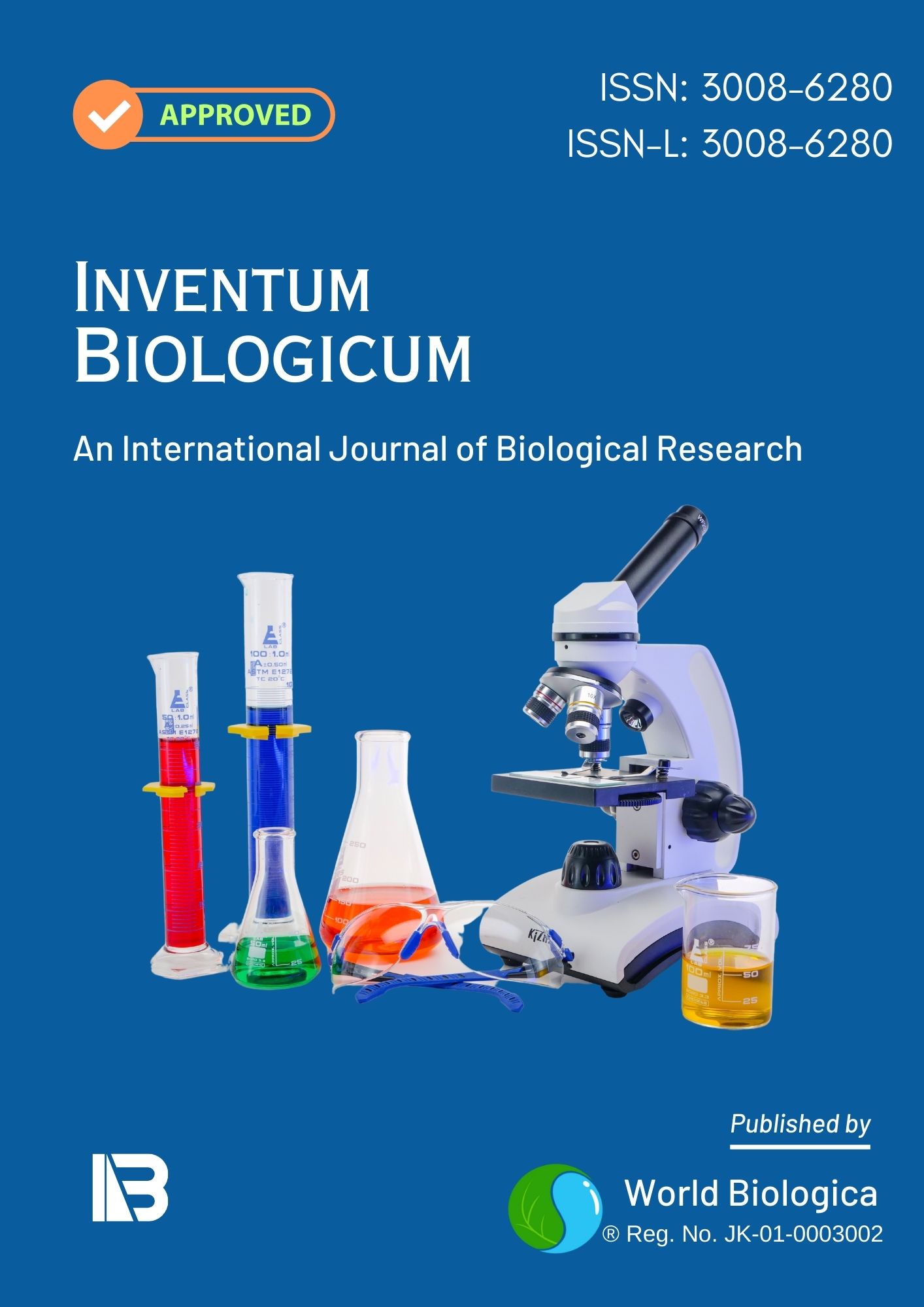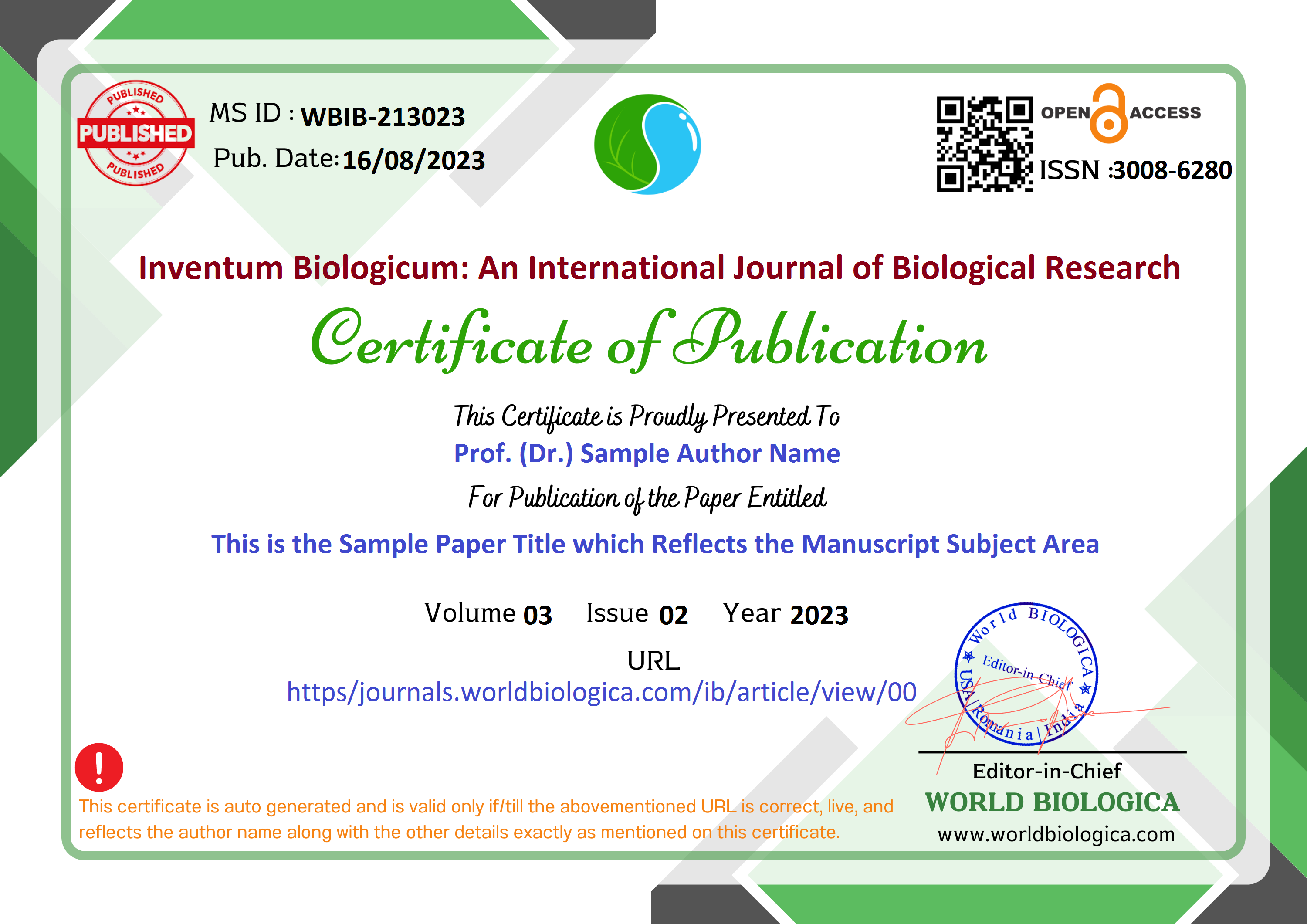An In-Depth Review of Liquisolid Compact Techniques: Principles, Applications and Characterizations
Keywords:
Liquisolid, Compacts, Solubility enhancement, Principles, Applications and CharacterizationsAbstract
For the majority of therapeutic agents, oral drug administration has proven to be one of the most practical and widely recognised methods of delivery. Because of its clear benefits of convenience, better patient compliance, and ease of administration, it is one of the most often utilised drug delivery methods. A unique idea in medication delivery, the Liquisolid Compact System can alter the pace at which pharmaceuticals that are insoluble in water dissolve. A more modern method known as "powdered solution technology," also known as "Liquisolid technology," has been used to turn medications that are insoluble in water into fast-acting solid dosage forms. One of the industry's most difficult challenges in creating the perfect solid dosage form unit is the restricted solubility of pharmaceuticals. The liquidsolid strategy is a fresh and effective way to deal with this outcome. The method is predicated on dissolving the insoluble drug in a non-volatile solvent and combining drug-loaded solutions with suitable carriers and coating materials to create powders that flow and compress into acceptable forms. The specific chemical moieties have no bearing on the choice of non-toxic hydrophilic solvent, carrier, coating materials, or their ratios. Either a larger surface area of the drug that is accessible for release, an increase in the drug's aqueous solubility, or better wettability of the drug particles are the causes of the higher bioavailability.
Downloads
References
Sharma, A., Jain, C.P. Techniques to enhance solubility of poorly soluble drugs: a review. J.Global Pharm. Tech., 2010, 2: 18-28.
Saharan, V.A.,Kukkar, V., Kataria, M., Gera, M., Choudhury, P.K. Dissolution enhancement of drugs. Part I: technologies and effect of carriers. Int. J. Health Res.,2009, 2: 107-124.
Saharan, V.A., Kukkar, V., Kataria, M., Gera, M., Choudhury, P.K. Dissolution enhancement of drugs. Part II: effect of carriers. Int. J. Health Res, 2009, 2: 207-223.
S.Spireas, US Patent, US 6,423,339 B1.
SpirasS.Liqui-solid systems and methods for preparing same, United States patent6, 423,339 B1, (2002).
Spiras S, Bolton SM. Liqui-solid systems and methods for preparing same, United States patent 6,096,337, 2000.
Spiras S, Wang T, Grover R. Effect of powder substrate on dissolution properties of methylclothiazideLiqui-solid compacts, Drug. Dev. Ind. Pharm., 1999; 25: 63-168.
Charman SA, Charman WN. Oral modified release delivery systems, In: Rathbone MJ. Hadgraftb J, Roberts MS. Modified Release Drug Delivery Technology, New York, 2003; 1-9.
Papadimitriou SA, Bikiaris D, Avgoustakis K. Microwave-induced enhancement of the dissolution rate of poorly water-soluble tibolone from poly (ethylene glycol) solid dispersions. J Appl Polymer Sci, 2008; 108: 1249-1258.
Smirnova I, Suttiruengwong S, Seiler M, Arlt M. Dissolution rate enhancement by adsorption of poorly soluble drugs on hydrophilic silica aerogels. Pharm Dev Tech, 2004; 9: 443-452.
Fahmy RH, Kassem MA. Enhancement of Famotidine dissolution rate through liquisolid tablet formulation: In vitro and In vivo evaluation. Eur.J.Pharm. Biopharm, 2008; 69:993- 1003.
Charman SA, Charman WN. Oral modified release delivery systems, In: Rathbone MJ. Hadgraftb J, Roberts MS. Modified Release Drug Delivery Technology, New York, 2003; 1-9.
Papadimitriou SA, Bikiaris D, Avgoustakis K. Microwave-induced enhancement of the dissolution rate of poorly water-soluble tibolone from poly (ethylene glycol) solid dispersions.J Appl Polymer Sci, 2008; 108: 1249-1258.
Smirnova I, Suttiruengwong S, Seiler M, and Arlt M. Dissolution rate enhancement by adsorption of poorly soluble drugs on hydrophilic silica aerogels. Pharm Dev Tech, 2004; 9: 443-452.
Jarowski CI, Rohera BD, Spireas S. Powdered solution technology: principles and mechanism. Pharm Res, 9, 1992, 1351- 1358.
Barzegar JM, Javadzadeh Y, Nokhodchi A, Siahi-Shadbad MR. Enhancement of dissolution rate of piroxicam using liquisolid compacts. II Farmaco, 60, 2005, 361-365.
Spireas SS. Theoretical and Practical Aspects of liquisolid compacts. Ph.D. Thesis, St. John’s University, New York, 1993.
Javadzadeh Y, Navimipour B, Nokhodchi A. Liquisolid technique for dissolution rate enhancement of a high dose water-insoluble drug [carbamazepine]. Int J Pharm 2007;341: 26-34.
Spiras S, Wang T, Grover R. Effect of powder substrate on dissolution properties of methyclothiazide Liquisolid Compacts. Drug Dev Ind Pharm 1999;25:63-168.
Banker GS, Anderson NL. Tablets. In: The theory and practice of industrial pharmacy. Lachman L, Liberman HA, Kanig JL. edn. 3rd. Varghese Publishing House, Bombay, India; 1987. p. 293- 345.
Javadzadeh Y, Siahi MR, Asnaashri S. An investigation of physicochemical properties of piroxicam liquisolid compacts. Pharm Dev Tech 2007;12:337-4.
Spiras S. Liquisolid systems and methods for preparing same, United States patent 2002;6:423, 339.
Spiras S, Bolton SM. Liquisolid systems and methods for preparing same, United States Patent 2000;6:96, 337.
Bolton S, Spireas S. Sustained-release liquisolid compacts. In:25th International Symposium on Controlled Release of Bioactive Materials., Nevada, USA; 1998. p. 138-9.
Staniforth J. Powder flow. In: M Aulton. Pharmaceutics: the Science of Dosage Form Design, Edinburgh; 2002. p. 197–210.
International Symposium on Controlled Release of Bioactive Materials., Nevada, USA; 1998. p. 138-9.
Wells J. Pharmaceutical Preformulation: The physicochemical properties of drug substances. In: Aulton M. Pharmaceutics: the Science of Dosage Form Design, Edinburgh; 2002. p. 114-38.
Nokhodchi A. The effect of type and concentration of vehicles on the dissolution rate of a poorly soluble drug (indomethacin) from liquisolid compacts. J Pharm Sci 2005;8:18-25.
Amrit B Karmarkar, Indrajeet D Gonjari, Avinash H Hosmani, Pandurang N Dhabale, Satish B Bhise. Liquisolid tablets: a novel approach for drug delivery. Int J Health Res 2009;2:45-50.
PM Sabale. Liquisolid technique for enchancement of dissolution properties of Fenofibrate. Int J Pharma Sci Res2012;3:1481-6.
Sambasiva RA, Naga AT. Liquisolid technology: an overview. Int J Res Pharm Biomed Sci 2011;2:401-9.
Subhramanyam CVS. Textbook of physical pharmaceutics. 2nd edition. Vallabh Prakashan. New Delhi; 2001.
Vajir S. Enhancement of dissolution rate of poorly watersoluble diclofenac sodium by liquisolid technique. Int J Pharm Chem Sci 2012;1:989-1000.edition. Vallabh Prakashan. New Delhi; 2001.
Patric JS. Martin’s physical pharmacy and pharmaceutical sciences. 5th ed. Lippincott Williams and Wilkins; 2003.
Chuahan PV, Patel HK, Patel BA, Patel KN, Patel PA. Liquisolid technique for enhancement of dissolution rate of ibuprofen. Int J Pharm Res Scholars 2012;1:268-80.
Patric JS. Martin’s physical pharmacy and pharmaceutical sciences. 5th ed. Lippincott Williams and Wilkins; 2003
Nighute AB, Bhise S B, Enhancement of dissolution rate of rifabutin by preparation of microcrystals using solvent change method, Int. J. PharmTech. Res. 1: 142-148 (2009).
Patel VP, Patel NM, Dissolution enhancement of glipizide using liquisolid tablet technology, Indian Drugs. 45(4): 318- 323 (2008).
Downloads
-
Download PDF
 Abstract Views: 57,
Abstract Views: 57,  Download PDF: 39
Download PDF: 39
Published
How to Cite
Issue
Section
License
Copyright (c) 2024 Inventum Biologicum: An International Journal of Biological Research

This work is licensed under a Creative Commons Attribution-NonCommercial-NoDerivatives 4.0 International License.

















